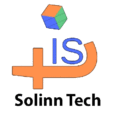Introduction to Computer Science and Information Technology
Computer Science and Information Technology (IT) form the backbone of the modern digital ecosystem. Computer Science deals with the theoretical foundations, algorithms, and software development processes that enable computing devices to perform efficient tasks. IT focuses on practical applications, including network infrastructure, system administration, cybersecurity, and cloud computing, crucial for business operations and communication in the digital era.
Core Areas of Computer Science
Computer Science covers a broad range of topics such as:
- Algorithms and Data Structures
- Programming Languages (Python, Java, C++)
- Software Engineering and Development
- Artificial Intelligence and Machine Learning
- Cybersecurity Fundamentals
- Database Management Systems
- Operating Systems and Computer Architecture
Each area contributes to building efficient, scalable, and secure computing solutions.
Key Components of Information Technology
IT primarily encompasses:
- Network Administration and Security
- Cloud Computing Platforms and Services
- Data Storage and Management
- IT Support and Helpdesk Services
- Cybersecurity Practices and Tools
- System Integration and Automation
IT professionals ensure the smooth operation and security of technological resources in organizations.
Differences Between Computer Science and Information Technology
While Computer Science is centered on theoretical and software-oriented problem solving and innovation, IT is dedicated to the implementation and management of technology infrastructure. The fields overlap in areas such as cybersecurity, software deployment, and network management but serve different organizational functions.
Current Trends and Innovations
The technology sector is rapidly evolving with trends like:
- Artificial Intelligence and Deep Learning
- Internet of Things (IoT) Integration
- Blockchain and Cryptography Applications
- Big Data Analytics and Visualization
- Cloud-native Applications and Multi-cloud Strategies
- Enhanced Cybersecurity Frameworks
These advancements are shaping future career opportunities and business models.
Career Opportunities in Computer Science and IT
Graduates and professionals can explore diverse roles including software engineer, data scientist, AI specialist, network administrator, IT project manager, cybersecurity analyst, and cloud architect. Continuous learning and certification are keys to success in these dynamic fields.
SEO Best Practices for Technology Websites
For solinntech.com to rank high on search engines, focus on:
- Keyword Research: Use specific keywords like “computer science basics,” “network security solutions,” and “cloud computing services.”
- On-page SEO: Optimize title tags, meta descriptions, header tags, and use keyword-rich content.
- Technical SEO: Improve site speed, mobile responsiveness, secure HTTPS protocol, and structured data.
- Content Quality: Publish unique, informative, and regularly updated articles with multimedia elements.
- Link Building: Develop backlinks from authoritative technology sites and industry forums.
Conclusion and Future Outlook
Computer Science and Information Technology will continue to be key drivers of innovation. Businesses must stay abreast of technological advances and integrate cutting-edge solutions to maintain competitiveness. solinntech.com can leverage comprehensive, SEO-optimized content to build authority and attract targeted traffic.
